Amphimoea
Amphimoea is a monotypic moth genus in the family Sphingidae erected by Walter Rothschild and Karl Jordan in 1903. Its only species, Amphimoea walkeri, the Darwin hawkmoth, described by Jean Baptiste Boisduval in 1875, is found from Mexico south to Argentina.
| Amphimoea | |
|---|---|
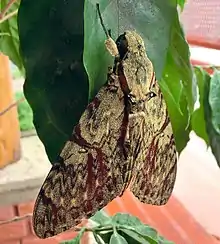 | |
| Scientific classification | |
| Domain: | Eukaryota |
| Kingdom: | Animalia |
| Phylum: | Arthropoda |
| Class: | Insecta |
| Order: | Lepidoptera |
| Family: | Sphingidae |
| Tribe: | Sphingini |
| Genus: | Amphimoea Rothschild & Jordan, 1903 |
| Species: | A. walkeri |
| Binomial name | |
| Amphimoea walkeri | |
| Synonyms | |
Description
The wingspan is 147–164 mm.[3] Adults are on wing year round. They have the longest insect proboscis in the world and nectar from deep-throated flowers while hovering in the air.
Biology
The larvae feed on Anaxagorea crassipetala.
Gallery
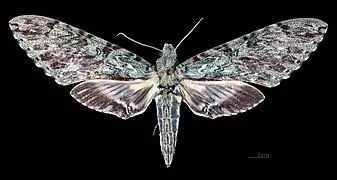 Female
Female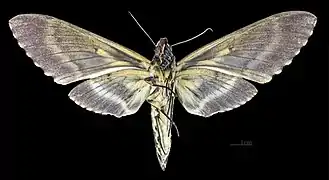 Female underside
Female underside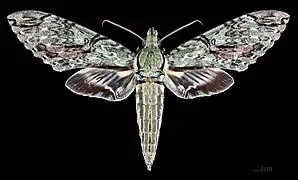 Male
Male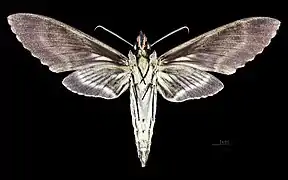 Male underside
Male underside
References
- "CATE Creating a Taxonomic eScience - Sphingidae". Cate-sphingidae.org. Archived from the original on 2012-11-14. Retrieved 2011-11-01.
- Rothschild, Walter (1894). "Notes on Sphingidae with Descriptions of New Species". Novitates Zoologicae. 1 (1): 92 – via Internet Archive.
- Oehlke, Bill (June 3, 2014). "Amphimoea walkeri The Darwin Hawkmoth (Boisduval, [1875])". Sphingidae of the Americas. Retrieved December 31, 2018.
This article is issued from Wikipedia. The text is licensed under Creative Commons - Attribution - Sharealike. Additional terms may apply for the media files.